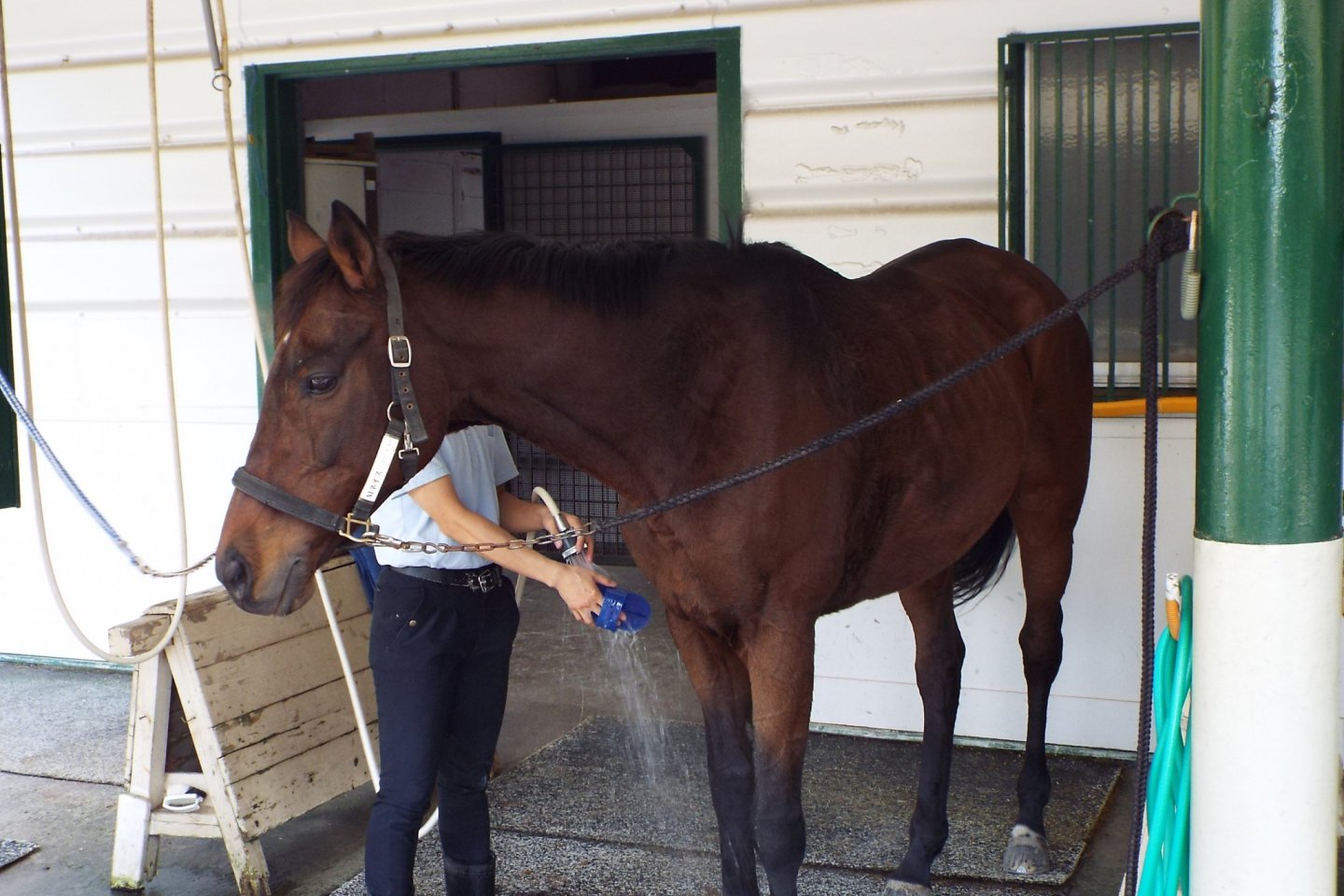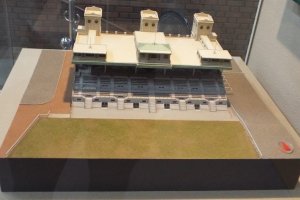Over the past nine months I have walked most of Yokohama as part of the city-sponsored 'Enjoy Walking Yokohama'. During my walks I set a goal of visiting every park in the city. Most visitors know of the bay area parks and Sankeien Park, but there are many other beautiful and unique parks that are well worth a visit. While walking through Negishi Forest Park, I discovered another gem that you need to put on your list. It is the Equine Museum of Japan. I asked if I could take pictures for a story and ended up with a personal guided tour by Mr. Fumiko Murai, the curator of the Museum. I was very impressed with the presentation of the history of horses and horse racing in Japan.
The museum has four exhibit sections that cover the history of Equine culture, Japanese equine, an interesting section about the evolution of horses, horse mascots, and an art gallery currently featuring the works of Yuko Yamamoto. The art gallery changes their exhibit periodically. Don't be fooled by the outside appearance, as the building has a much larger basement exhibit area.
Horse racing in the Kanto area began in 1862 at Chinatown Racetrack. In 1866 the Negishi Racecourse was founded as entertainment for Yokohama’s foreign residents. By 1872 the track was holding international races. Since the track and betting was controlled by foreigners the Japanese government outlawed horse race gambling.
Japanese horses were very small and strong, and were mainly used by Samurai warriors for battle. They were originally from Ehime prefecture. However, today’s horses are primarily bred in Hokkaido.
In 1923 they built a beautiful grandstand that was rated among the best in all of Asia.
It lasted 76 years and now off in the distances you can see the top of these ruins. Horse racing at Negishi track ended in 1991 when Japan again changed their Horse Racing Laws.
There is a nice picture and story of Saint Lite the first Japanese triple-crown winner (1941).
One of the exhibits is a 160 year-old farmhouse from Iwate prefecture. Walking through the house you get a feeling of what is was like to live as a farmer during the Edo period.
There is an Emperor's coach and a coach that is used to carry foreign ambassadors. Our current U.S. Ambassador Carolyn Kennedy rode in this horse drawn carriage during her presentation to the Emperor.
You can even look through binoculars that show us what a horse sees. There are many hands-on exhibits that make it a great place for the kids.
I was startled at the small size of a Samurai warrior’s horse that was killed in battle in Kamakura. An Australian horse CSI verified the wounds that killed the horse back in 1333.
After enjoying the exhibits, take a leisure stroll down to the Pony Center. There you can pet live horses, see Meiner Kitz the Emperor’s cup winner, Meiner Neos a Grand Champion Top Class jumper, and pet a 22 year old miniature pony. Back near the entrance in a corral is Yuki an original Hokkaido horse and Mikan a brown Japanese farm horse.
There is much more to see in the museum, as well as in the beautiful Negishi Forest Park.
This is another Yokohama hidden attraction that most foreign visitors are unaware of. It is easy to get to from Negishi Station, just a fifteen-minute walk, or you can ride bus number 21 towards Sakuragicho to the Museum.
The Museum is open daily except Mondays from 10 a.m. to 4:30 p.m. The park is open from 9:30 a.m. to 5 p.m.
For more information visit their web page and click on English.




































